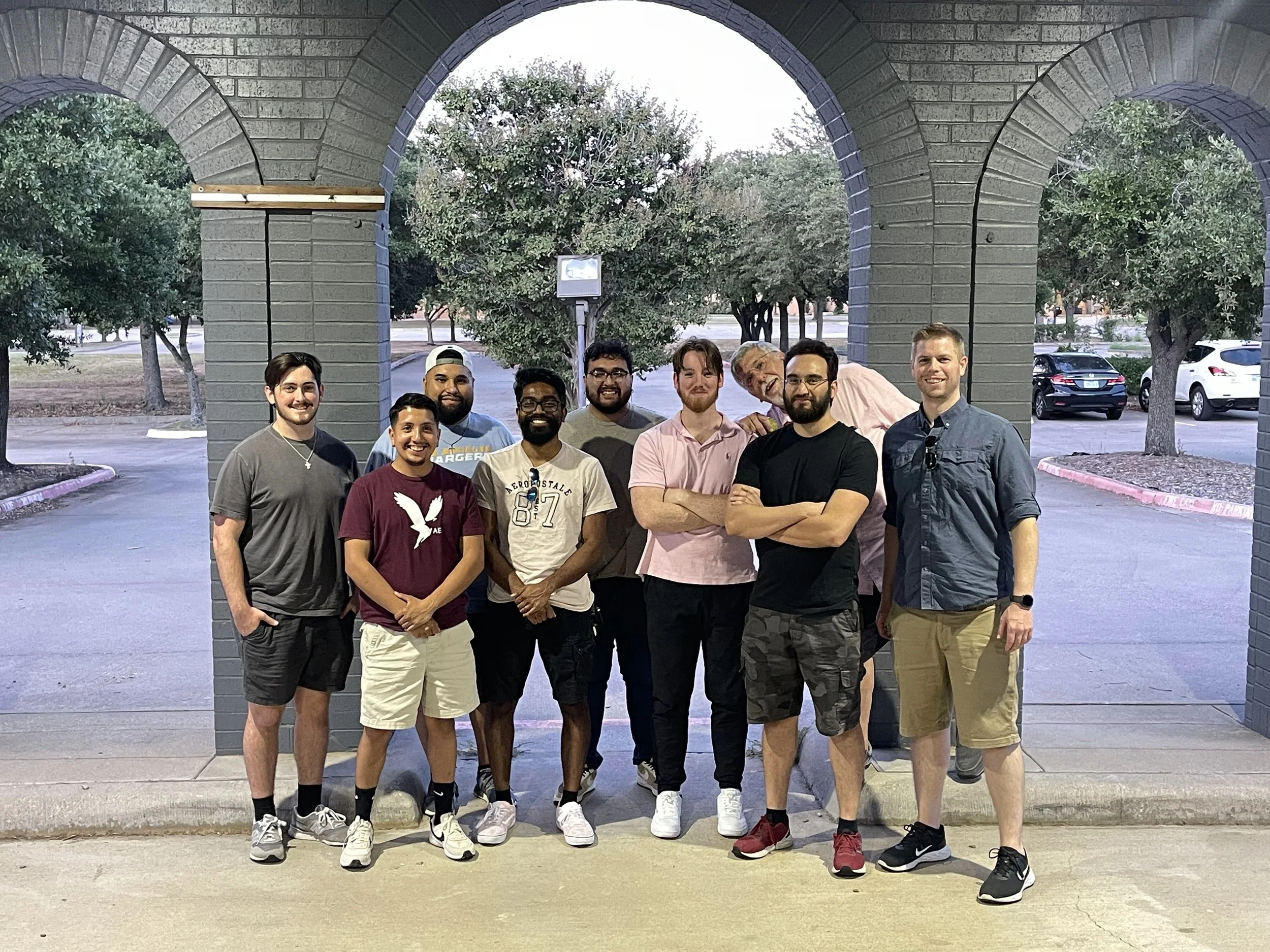
Teachers and Life Group Leader’s Playbook
A guide for ministry leaders at Lifeline Church
What is a Life Group Leader?
Life Group leaders are key influencers in our church community. They help direct, teach, and provide care for the many people both within and around our community. As the key leaders of our church they take the responsibility to provide the day-to-day discipleship of our congregation.
I’ll add a picture of your life group when you send it to me!
2. What are the duties of a Life Group Leader?
Life Group leaders primary duty is to facilitate their weekly gathering of men or women. They also help to build relational networks between the people in the group as to encourage ministry between group members.
A Life Group Leader should be able to:
Teach the Bible with a discussion model of instruction
Lead in prayer for the people and community
Exemplify Christ in the attitude of service.
Provide thoughtful discipleship to those they lead.
To invite new individuals to the group through intentional personal connection.
3. What is the most important thing to focus on as a Life Group Leader?
There are lots of components to making a Life Group: Prayer, story-sharing, teaching, service, food, fun, to name a few. Knowing the structure of a group is a big help.
Generally speaking, a life Group should have a focus on an engaging discussion centered on the Holy Scriptures. The teaching component of a Life Group is the foundation of the group. The other components serve as the personal touches that make each group distinct.
Note: All components of a Life Group are healthy and necessary to incorporate into the experience. If the foundation of teaching is replaced with another component as the key feature (for example food or story-sharing) the group will decline and become less meaningful to the point where members will not find it worthwhile to participate.
4. What curriculum or content should a Life Group leader be teaching?
Life Group Leaders are welcome to cultivate their own content. In fact, a Life Group Leader is best positioned to see and minister to the needs of the group. Also, a personalized teaching is often more positively delivered and received than a preset curriculum. (Occasionally, church-wide series will be presented through all Life Groups at Lifeline)
To serve as a starter, Lifeline Men’s and Women’s Ministry have crafted some discussion-based lessons to give you a starting place and to help you explore certain themes in the Bible. You can access those at MultiplyWithUs.Com.
Send us an email of your Life Group people so we can feature it here.
5. What makes for the best Life Group Experience?
There is a simple equation that we use that helps us simply this question.
Great Life Groups = Depth + Love
Depth means that the teaching and discussion possesses challenge to it and is consequential to the lives of the people who attend the group. It means that the teacher comes prepared to call forward those he or she ministers to. Without challenge (depth), the group will find it a less meaningful use of their time and attention.
Love means that the culture of the group is one where people know one another and care for one another. Love makes a group a place of trust and belonging and drives the group beyond the atmosphere of a class or lecture. In a Life Group where people love one another, the people look forward to being together each week.
Send us an email of your Life Group people so we can feature it here.
6. When and where should a Life Group meet?
Life Groups should be hosted weekly in an environment that is mostly private and comfortable for the members to enjoy. Atmospheres that are distracting, loud, or where others can overhear what is shared can make it challenging for the group to experience the benefit of trust and vulnerability. A home living room, or a church facility is ideal for a regular group gathering (though a coffee shop atmosphere can sometimes work as well).
Additionally, it’s good to understand that the best Life Group experience occurs when Life Groups engage outside of a weekly gathering. When members talk, visit, serve, and play together outside the group, it dramatically improves the health and growth of the people within the group.
Send us an email of your Life Group people so we can feature it here.
A Life Group tends to be healthiest when its between the size of 6-12 individuals. Groups often originate with smaller numbers for the first six months and grow once members start to connect more deeply and become more consistent. Groups larger than twelve can sometimes become difficult to lead unless the group has multiple assistants to share the responsibility of caring for people.
It’s important to understand the value of multiplication. Though a larger group may enjoy it’s company, it will be healthier and more impactful when it multiplies so more space can be made for new friends in the group.
Note: Life Groups are open groups which means that they are designed for new people to join at any time, no matter the size.
7. What size should a Life Group be?
Send us an email of your Life Group people so we can feature it here.
8. How are Life Groups added?
When Life Groups are healthy, they grow. And if they keep growing, there will be a need to have more Life Group options for people to join.
The best way to add new groups is to multiply healthy ones (We use multiply, because groups generally do not like to “split” or “divide”). Groups multiply when:
A Leader raises up a competent Co-leader and at least one Life Group Assistant.
The Leader or the Co-Leader is sent out of the group to create a new group (usually with 2-3 existing members)
The assistant joins the Co-Leader to help establish a new group or lead the existing one.
This model allows for the healthy group to stay established while sending the healthy culture to create a new group. This reduces the larger size of the existing group, while making space for the new group to have lots of room to grow.
9. How does a Life Group onboard new helpers and new leaders?
One of the most intentional things a Life Group leader can do is to help new people share the responsibility of ministering to the group. There are lots of creative ways to accomplish this. For example, sharing snack responsibilities, leading prayer, and organizing outside activities.
Life Group Assistants and Co-Leaders
Life Group leaders can develop and invite members from their group to become a Life Group Assistant or a Co-leader. These roles can include the sharing of teaching responsibilities and communicating with the group. The intentional effort to develop new leaders is a key aspect to ministry discipleship that every Life Group leader should be thinking about.
Lifeline has an established process to create a pathway for new leaders to learn the skills and attitudes necessary for leading a group. You can learn more about that process on our Pathway to Becoming a Teacher page.
Send us an email of your Life Group people so we can feature it here.
10. What are the expectations of a Life Group Assistant and Co-leader?
Life Group Assistants:
To serve alongside the leader of the group. To reinforce group goals, to provide additional ministry to the people in the group, and to help teach, pray, and serve with the leader.
Life Group Co-Leaders:
To share the duties of leadership with the Life Group Leader. To partner in effort to disciple the group and to include new people in the group?








